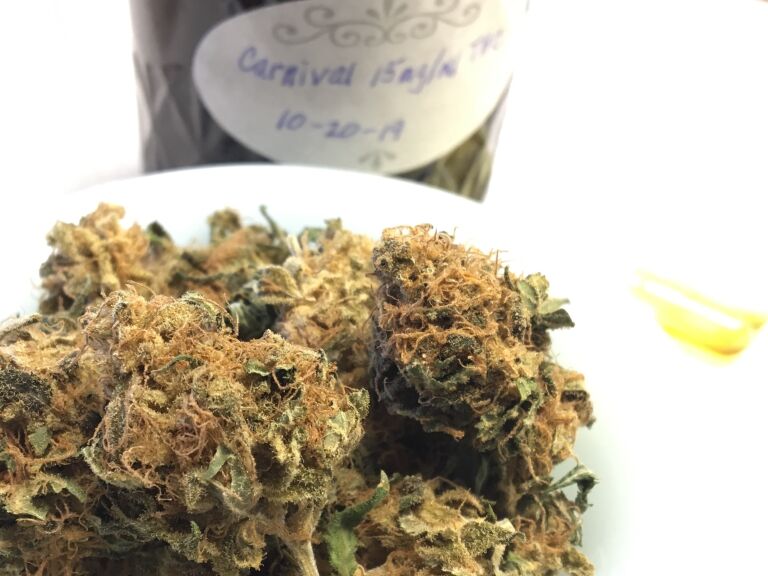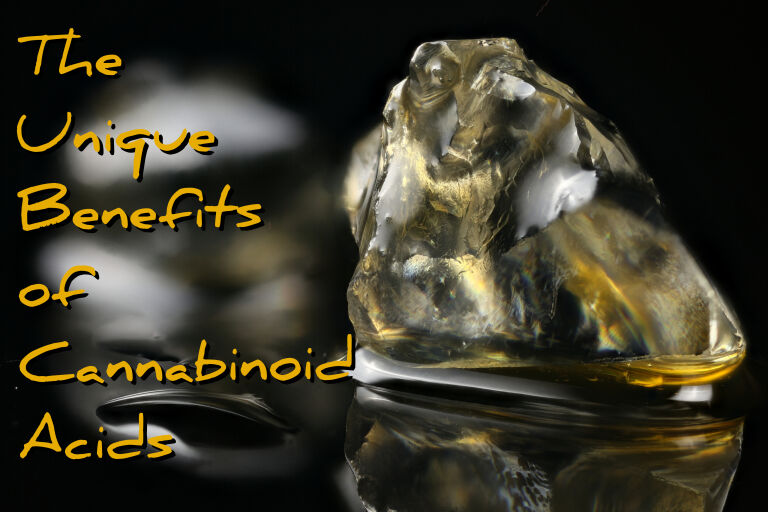Your brain contains billions of nerve cells called neurons, and they’re all talking to each other using molecular electrochemical signals. Waves of signals flow between the cortex and other structures as the neurons work diligently to interpret what the incoming sensory data means and together formulate a plan of action in response that feels right.

All this neural activity requires the oversight of your endocannabinoid system (ECS), which is continuously working to keep your entire body, brain included, in a state of cellular balance we call homeostasis.
Rendezvous with Receptors
The intricate interplay of the ECS relies in part on the specialized signaling of receptors floating in the cellular membranes, two of which we’ve identified as CB1 and CB2. Cannabinoids are signaling molecules that interact with the brain primarily through these two receptors, as well as various other signaling pathways, which I’ll cover in more depth below.
When matching up cannabis molecules with ECS receptors it’s usually:
THC for ECS receptor CB1
and
CBD for ECS receptor CB2
CB2 receptors will be found in greatest concentrations outside the CNS, but their expression on cells of the immune system and their tendency to appear on damaged cells brings them into play with the brain in times of inflammation and injury.
CBD will play a larger role in controlling inflammation, but THC also has an active participation in immune response.

The brain is the home base of the central nervous system (CNS) and expresses an overwhelming majority of CB1 receptors. Activation of cannabinoid receptors in the brain will influence multiple body functions affecting emotion, memory, pain, and movement. Using cannabis means you’ll be signaling particular regions and structures of the brain.
What parts of the brain do cannabinoids activate?

All regions of the brain express cannabinoid receptors, which makes sense, given that the ECS modulates all other body systems in its goal of maintaining balance throughout.
ECS receptor concentration isn’t necessarily an indication of how dynamic the results of their activation will be, but the highest concentrations in the brain are found beneath the protective folds of the cerebral cortex, in the intricate network of neuronal nuclei of the basal ganglia. Here, three parallel circuits work out:
- what you already know and what you need to know to move forward,
- what actions or movement to promote as well as what actions to inhibit, and
- how you feel about all this.
Together, the nuclei formulate a plan which is sent to the thalamus for fine-details polishing. The completed “best option” plan is then forwarded back to areas of the cortex best equipped to send signals to the body to execute the plan – all in less than the blink of an eye.
Let’s take a quick glance at some of the brain structures cannabis will be influencing and their basic functions.
Pain Perception

Chronic pain is one of the top reasons people choose cannabis as a medicine because of the profound potential for relief. Many types of pain respond positively and quickly to THC. With a bit of trial and error to identify the terpene and cannabinoid profiles that most benefit your individual ECS and a little focus pinning down your minimum effective dose you can expect to be able to manage your pain with few if any side effects.
Chronic pain is its own beast. It’s worth remembering that high doses of THC may make chronic pain worse.
The primary structures cannabis activates to modulate pain sensation are:
- the amygdala, which retrieves and processes emotional memories. Cannabis can soften painful memories and help you break the loop of negative memory recall and the fear that accompanies it.
- the thalamus, acting as a relay station, fine-tuning the plan for coordinated action,
- the periaqueductal gray, primary control for modulating outgoing pain signals, and
- the spinal Cord, the shared major pathway for messages coming into the brain for processing and going out to the body to create change. Little way stations along the neural pathways can modify pain signals.
Memory and Learning

Cannabis can help the brain focus on the task at hand, and enhance learning potential by signaling efficient processing of memories and the emotions attached to them. Motivation, study habits, long-term memory development and the ability to move smoothly through space are but a few of the mental processes improved by cannabis use.
The main processor of information coming into the basal ganglia from the cortex is the putamen. Along with its role in movement, it also has a part in learning and memory, language and emotion.
The caudate nucleus works as a feedback processor, which means it uses information from past experiences to influence future actions and decisions.
In the limbic system, the hippocampus regulates learning, memory encoding, memory consolidation, and spatial navigation.
Sensitive people and those who overindulge can sometimes find memory and learning a challenge while under the influence.
Emotional Processing and Balance

Every thought has an emotional tag that the body will use to preload the peptides that’ll drive your emotional and physical responses. The right dose of cannabis can help your limbic system pay less attention to negative emotional tags in your memory that create tension, and instead influence more positive neurotransmitters and hormones that create a sense of wellbeing.
The wrong cannabis formulation for your body can create paranoia or anxiety, so pay attention to what your body says before you take too much.
The multitudinous folds of the cerebral cortex receive incoming signals that get forwarded to relevant brain regions for processing. When the plan of action returns, the cortex executes the plan, sending out signals to direct complex thinking, feeling, and movement.
Sitting beneath the cortex and almost lovingly embracing the basal ganglia you’ll find the limbic system, responsible for processing emotional response. The balancing power of a healthy ECS keeps a gentle hand on negative memories and encourages a more positive slant to interpreting the world around us and within us.
Coordinated Motor Control

The goal of the brain is to create fluid, efficient, target-oriented movement. With cannabis, intention and dosing play a big part in results. THC can cause you to become a little clumsy if you get too high for your experience by interfering with the signaling of the cerebellum as it attempts to keep your movements smooth and relevant to the task at hand.
Many active people find cannabis use can create wonderful focus for physical activities, like brought about by the interplay of cannabinoids and the cerebral cortex, where fine motor control impulses are formulated and sent out to the muscles.
The putamen has major input in the decision to move, the choice of movement to make, and the initiation of that movement.
The globus pallidus appears to inhibit motor neurons, acting as part of the basal ganglia’s role in smooth movement.

Appetite Balance: Cannabis is famous for stimulating the appetite, a valuable resource for someone struggling to get nutrition into a healing body. Cannabinoid receptors of the hypothalamus help to control hormone production and maintain system homeostasis.
If your challenge is controlling eating behaviors it’s helpful to learn which terpenes stimulate your appetite and which will suppress the drive to reach for food. Your choices will be as individual as your ECS.
Motivation and Rewards

THC will get you high. CBD will create a deep sense of wellbeing, but they’ll both change your mood for the better, at the right dose. Cannabinoid signals can create feelings of gratification, pleasure, satisfaction, all of which reduce tension and fuel motivation.
The nucleus accumbens supplies dopamine to tag memories with emotion, be they positive or negative.
A central part of the body’s reward system is the ventral tegmental area, supplying dopamine all through the brain, reinforcing behavior.
More dopamine is supplied by the adjacent substatntia nigra pars reticulata, whose neurons exert more of an inhibitory effect in movement. This collection of neurons also play a part in learning, addiction and emotion.

Gut Relief: The part of the brain that controls nausea and vomiting is filled with cannabinoid receptors. Both THC and CBD will sooth a raging gut, with THC offering a slight upper hand.
The dorsal vagal complex is central control of incoming and outgoing signals of the vagus nerve, which connects your brain to all of your internal organs.
A Significant Sidebar
When we consider how cannabis interacts with the brain we tend to consider the ECS receptors, but the reality is that some of the most important effects may well be the activation of other targets that signal profound cellular changes.

- G-coupled protein receptor 55 (GPR55) – If there are ECS receptors beyond CB1 and CB2, GPR55 may one day be recognized as one. Widely expressed throughout the brain and in particular the cerebellum, GPR55 has been shown to regulate pain as well as the production of endocannabinoids.
- TRPV ion channels – Perception of the painful smell and feel of “HOT!” is regulated by the TRPV family, which are sensitive to temperature variations caused by external sources as well as internal inflammation.
- PPARs are specialized receptors that regulate genes created to balance metabolism with adequate energy supplies. PPARS also contribute to protecting cardiac tissues and neurons. The greatest concentration of neurons is your brain.
The Big Takeaway

Cannabis can dramatically reduce negative stress levels, resulting in healthier balances of signaling molecules in the bloodstream. That feeling of wellbeing so prevalent in cannabis consumers suggests their brains are allowing their body to relax more, and relaxed cells give receptors and cannabinoids a better chance of matching up.
Cannabinoids aren’t the only signaling molecules that benefit from a relaxed body and mind, they’re just the ones tasked with keeping all the rest of the molecules in homeostatic balance.
Cannabis – A Safe and Personal Experience
Every patient or consumer of cannabis has an individual story of why they choose weed, and each follows an individual path to relief, expansion and creative expression. To get optimal results you’ll want to experiment with different strains, dosing levels, product lines, and equipment. Explore with confidence, knowing no one has ever died from trying one of the world’s oldest, safest medicines. According to our own federal government:
An overdose occurs when a person uses enough of the drug to produce life-threatening symptoms or death. There are no reports of teens or adults dying from marijuana alone.
National Institute on Drug Abuse



